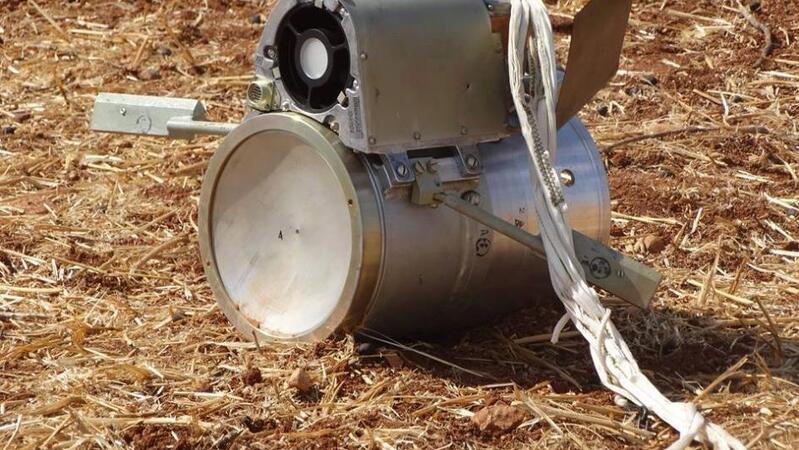The Cluster Munition Coalition U.S. calls on Russia and Syria not to use cluster munitions in their joint offensive, which Russia began on September 30. According to Human Rights Watch, which serves as chair of the Cluster Munition Coalition, an advanced sensor fuzed weapon was used in an attack on October 4 while evidence indicates renewed use of cluster munitions as part of a joint Russian-Syrian offensive in the north of the country.
At least three types of cluster munitions --all manufactured in Russia--have been used in three governorates of Syria since Russia's intervention began 12 days ago:
- Mid-air explosions consistent with the use of cluster munitions with SPBE submunitions were recorded in videos reportedly filmed in the countryside near Kafr Halab in Aleppo governorate on October 4, while photographs reportedly taken at the same location two days later show the remnants of SPBE sensor fuzed submunitions. Human Rights Watch concluded that they were most likely used in an air-dropped RBK-500 SPBE cluster bomb;
- Smoke trails from ground-fired rockets and multiple subsequent explosions are shown in a video reportedly in shot the town of Keferzita in Hama on October 7 while a photograph reportedly taken in the town that day shows the distinctive remnants of the tail section of a 300mm Smerch artillery rocket;
- Unexploded AO-2.5RT submunitions and an RBK-500 bomb canister remained after an on October 7 attack in Ma'saran village in Idlib according to photographs and a video taken by as local activists, Reuters subsequently photographed civil defense teams handling the submunitions, which the photographer said were placed in a pit and destroyed by open detonation.
No casualties have been reported from the attack on Kafr Halab in Aleppo, while it is is not clear if cluster munitions were responsible for civilian casualties in the attacks in Hama and Idlib.
Human Rights Watch could not conclusively determine if Russian or Syrian forces were responsible for these attack. It said that Russia is either using cluster munitions in Syria or providing the Syrian air force with new types of cluster munitions to use.
Syrian government forces have used air-dropped cluster bombs since mid-2012 as well as ground-fired cluster munition rockets, while extremist group Islamic State (ISIS) first used cluster munition rockets in 2014. No other group is known or reported to have used cluster munitions in Syria until now.
The ground attack aircraft and helicopters deployed by the Russian Federation in its military operation in Syria are capable of delivering other types of Russian-made RBK-series cluster bombs containing PTAB, AO, and ShOAB type explosive submunitions, the same types that previously documented used by the Syrian air force.
According to Cluster Munition Monitor 2015 – the annual survey issued by the Cluster Munition Coalition in September – at least 1,968 casualties were recorded from cluster munition attacks and unexploded submunitions in Syria in 2012-2014, the vast majority civilians.
Neither Russia nor Syria are among the 118 signatories to the 2008 Convention on Cluster Munitions, which prohibits cluster munitions, and requires their clearance and victim assistance. The U.S. has not signed either. A total of 98 signatories have now ratified the ban convention, including Colombia, Mauritius, and Somalia in the past month.
The RBK-500 SPBE cluster bomb is banned by the Convention on Cluster Munitions. It is similar to the US-produced CBU-105 Sensor Fuzed Weapon used by the Saudi Arabia-led coalition during 2015 in Yemen, also prohibited by the ban treaty.
In an October 1 letter to Russian President Vladimir Putin, the Cluster Munition Coalition warned Russia not to use cluster munitions in its Syria operation due to the “foreseeable and preventable” danger posed to civilians.
For more information, see:
- Report by Human Rights Watch (October 11)
- Posts by independent research organizations Armament Research Services and Bellingcat, photos posted by Sham News Network (October 6)
